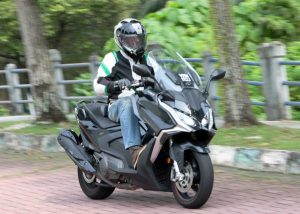LONDON: Electric vehicles (EVs) were supposed to supercharge demand for metals such as lithium, nickel and cobalt.
Yet prices for all three EV battery inputs have fallen to such bombed-out levels that producers are curtailing output and deferring new projects.
This is partly a problem of oversupply. Explosive price rallies in 2021 and 2022 resulted in too much new production capacity being brought online too quickly.
But it is also a problem of demand.
The transition away from the internal combustion engine has by no means ground to a halt. Global new energy vehicle sales were up by 20% year-on-year in January-August, according to consultancy Rho Motion.
Rather, the mix of vehicles being sold and the evolution of battery chemistry have dramatically changed the metals demand dynamic.
THE RISE OF THE HYBRIDS
Pure battery electric vehicle (BEV) sales have underperformed expectations due to buyers' concerns about limited driving range and charging infrastructure.
By contrast, hybrid and plug-in hybrid cars, which have both a battery and internal combustion engine, have soared in popularity.
The increase in global sales of BEVs slowed to 10% year-on-year in the first eight months of 2024, while plug-in hybrid (PHEV) sales jumped 46%, according to Rho Motion.
This trend has been led by China, the world's largest EV market.
The key driver is the emergence of the extended range electric vehicle (EREV), a type of PHEV that uses the gasoline engine solely to charge the battery, giving the vehicle an extended driving range of more than 1,000 kilometres (621 miles).
EREVs now account for 31% of all plug-in hybrid sales in China, according to research house Adamas Intelligence, which expects them to enjoy similar success in both Europe and the United States.
Major automakers are embracing hybrids in all forms as a relatively low-cost transition technology between gasoline and pure electric vehicles.
Hybrids don't need the same battery power as a BEV. Adamas calculates that battery pack capacity in a PHEV is a third of that in a BEV, which means a similar-sized reduction in the amount of lithium, nickel and cobalt used per vehicle.
Other metals, however, stand to benefit from the rise of the hybrids. Platinum and palladium, which are used to clean auto exhausts, have been granted an unexpected new lease of life.
CHANGING CHEMISTRY
While the new energy vehicle mix is changing, so too is battery chemistry.
Lithium-iron-phosphate batteries (LFP) have become the rising stars of the battery industry, accounting for around 40% of battery demand in 2023, more than double the share recorded in 2020, according to the International Energy Agency (IEA).
As with the new extended range hybrids, the LFP revolution is being led by China, where two-thirds of EV sales used this technology in 2023, the IEA estimates.

Chinese battery makers have turned what was once regarded as a low-power technology suitable only for short city commutes into a product that can compete with nickel-manganese-cobalt battery chemistries.
China's CATL unveiled a new break-through LFP battery at the Beijing auto show in April. The Shenxing Plus boasts a driving range of 1,000 kilometres on a single charge, effectively eliminating range anxiety.
The only critical metal input for an LFP battery is lithium. It doesn't require either nickel or cobalt, which makes an LFP battery both cheaper and more environmentally friendly than other chemistries.
The market has taken note. Demand forecasts for nickel and cobalt use in batteries have been steadily downgraded over the last year to factor in China's pivot towards LFP technology.
GOING GLOBAL
European and U.S. automakers have until now stuck with high-nickel chemistries in their EV batteries but that may be starting to change.
Both Ford Motor and General Motors have shown interest in using CATL's LFP technology
Moreover, while China has been the only mass-producer of LFP batteries since the 2010s, the core patents that enabled this dominance expired in 2022.
This has sparked interest outside China.

For example, the IEA has noted a surge of LFP investment in Morocco, which is home to the world's largest phosphate reserves. Importantly, it also holds free-trade agreements with both the European Union and the United States.
A TWISTING ROAD
Li Auto's L6 family sports utility vehicle is an example of how hybrid and LFP technologies have come together to upset preconceived notions about the EV market.
Boasting what the company calls "the latest generation of lithium-iron-phosphate battery", the vehicle has a range of 212 kilometres in pure battery mode and a range of 1,390 kilometres in mixed battery-engine mode.
The Li6 can accelerate from zero to 100 kilometres an hour in 5.4 seconds, which lays to rest any fear that LFP batteries can't deliver the same performance as nickel-rich batteries.
Such products are good news for the broader energy transition, offering consumers a cheap, reliable alternative route to an all-electric future.
But they challenge the idea that the global auto market will jump straight from the internal combustion engine to a pure battery vehicle.
They also defy expectations that all EV batteries need nickel and cobalt to enhance power and performance.

What's more, the battery revolution has only just begun. Battery makers are investing heavily in research and development with the goal of developing ever cheaper, more powerful batteries.
Even lithium is at risk of substitution from sodium-ion batteries as CATL and other Chinese companies such as BYD expand capacity for the new technology.
Sodium-ion batteries could cost up to 20% less than incumbent technologies and can be used for both stationary storage and compact urban EVs, according to the IEA.
They use no lithium but, depending on chemistry, need both nickel and manganese, which foreshadows the potential for more metallic twists in the unpredictable electric vehicle revolution.
- By Andy Home. The opinions expressed here are those of the author, a columnist for Reuters.












